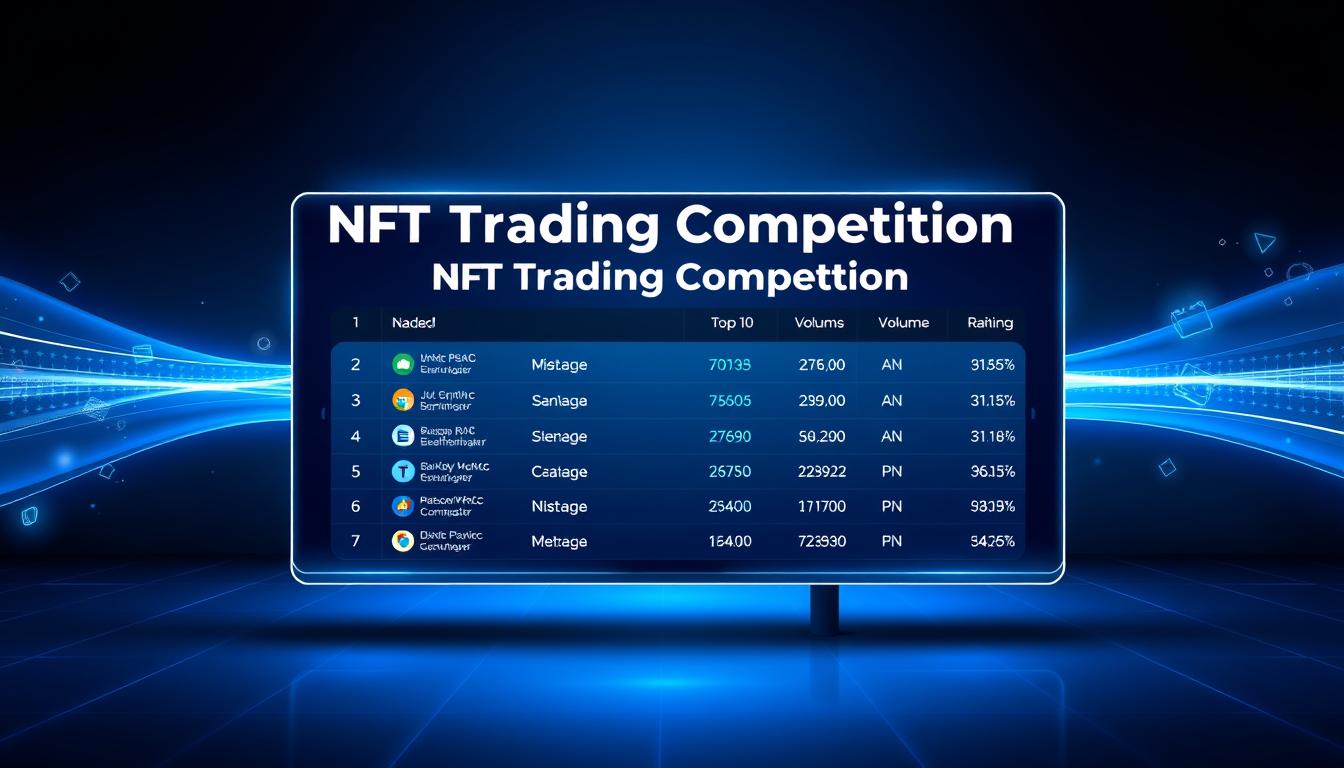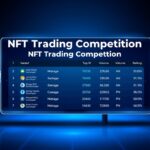Now Reading: Accurate NFT Pricing with AI powered NFT valuation and pricing tools
- 01
Accurate NFT Pricing with AI powered NFT valuation and pricing tools
Accurate NFT Pricing with AI powered NFT valuation and pricing tools

The digital collectibles space has exploded in popularity. Artists and musicians now tokenize their work, creating unique digital assets. This new market for creators has changed how we think about ownership.
But a big problem has emerged. How do you put a fair price on something so new? Traditional methods often fail. Values can swing wildly based on hype and community buzz, not solid data.
This uncertainty is a major roadblock for growth. Both buyers and sellers need clarity. They require objective metrics to make smart decisions in a fast-moving environment.
New technology offers a solution. Advanced systems analyze vast amounts of market data. They provide data-driven estimates, bringing much-needed transparency. This guide will explore these powerful resources.
We will break down how these platforms work. You will learn to leverage them for better purchasing strategies. Our goal is to help you navigate this exciting landscape with confidence.
Key Takeaways
- The NFT market has created new opportunities for digital ownership but presents significant valuation challenges.
- Traditional pricing methods struggle with the unique nature of these digital assets.
- Market values are often influenced by subjective factors like hype and sentiment.
- Data-driven tools are emerging to bring objectivity and clarity to pricing.
- Understanding these solutions is key for both collectors and creators to succeed.
- This article serves as a guide to the available technologies and their methodologies.
- Informed decision-making is crucial for navigating the current digital collectibles landscape.
Introduction to AI powered NFT valuation and pricing tools
Digital scarcity through blockchain technology enables true ownership of virtual items. This innovation has transformed how creators monetize their work. However, determining fair market value remains challenging.
Overview of NFTs and Digital Asset Valuation
Non-fungible tokens represent unique digital assets with distinct properties. They differ from traditional cryptocurrencies in their individuality. Each token carries specific attributes that define its worth.
Valuing these assets lacks standardized frameworks. Traditional financial models struggle with digital collectibles. The market relies heavily on subjective factors and community sentiment.

How AI is Shaping NFT Pricing
Advanced systems employ machine learning to analyze market patterns. These algorithms process vast amounts of transaction history. They identify subtle correlations that human analysts might miss.
Predictive models examine rarity scores and creator reputation. They generate data-driven estimates for digital art collections. This approach brings objectivity to a previously speculative market.
The technology provides valuable insights into emerging trends. Comprehensive analytics help collectors make informed decisions. This represents a significant shift toward maturity in the ecosystem.
Understanding NFT Valuation Challenges
Digital ownership through blockchain introduces pricing complexities that defy standard economic frameworks. Unlike traditional assets with established valuation methods, digital collectibles operate in a landscape where objective metrics are scarce.

No Standard Pricing Framework and Market Volatility
Traditional assets like stocks and real estate have clear valuation benchmarks. Company performance and location serve as reliable indicators. Digital art collections lack these consistent measures.
Market swings can be extreme. A piece might gain viral attention overnight. Celebrity endorsements can drive prices to unprecedented heights. The same asset could lose value just as quickly when trends shift.
Emotional Value and Rarity Factors
Personal attachment plays a significant role in digital art trading. Collectors often develop emotional connections to specific pieces. This subjective element creates inconsistent pricing across different buyers.
Rarity attributes present another challenge. A unique trait in a 10,000-piece collection might boost value. Quantifying this impact remains difficult without analytical support.
| Valuation Aspect | Traditional Assets | Digital Collectibles |
|---|---|---|
| Pricing Framework | Established metrics (P/E ratios, location) | Community sentiment and hype |
| Volatility Drivers | Economic indicators and earnings | Social media trends and influencer impact |
| Value Determinants | Tangible performance data | Rarity scores and emotional attachment |
| Risk Assessment | Historical data and industry analysis | Speculative market movements |
These challenges create real risks for market participants. Newcomers might overpay for hyped assets. Others might sell valuable pieces too early. Informed decisions require understanding these unique dynamics.
Role of AI in Transforming NFT Pricing
The integration of sophisticated analytical technologies is reshaping pricing strategies for unique digital assets. These systems move beyond traditional guesswork to deliver data-driven approaches.

Complex algorithms process massive datasets to identify meaningful patterns. This analytical approach brings scientific rigor to digital collectible markets.
Predictive Pricing Models and Algorithmic Analysis
Advanced models examine historical transaction data and rarity attributes. They generate quantifiable estimates with confidence intervals.
Machine learning algorithms uncover hidden correlations between asset characteristics and market behavior. These insights help collectors make informed decisions.
Sentiment Analysis and Market Trend Forecasting
Natural language processing monitors social platforms for community sentiment shifts. This provides early warning signals about demand changes.
Analytical systems detect market cycles and saturation points. Traders gain valuable insights into optimal timing for transactions.
Leveraging Data Analytics and Machine Learning
Contemporary evaluation systems process multiple data streams simultaneously. These approaches transform raw information into actionable insights for collectors.
Sophisticated models examine three critical categories of information. Each provides unique perspectives on digital asset worth.

Utilizing Transaction History and Historical Data
Every sale from minting to present creates a valuable timeline. This historical record reveals pricing patterns and market sentiment shifts.
Current listings across marketplaces indicate immediate demand levels. Combined with past transactions, they create comprehensive valuation pictures.
Trait information embedded in smart contracts adds another dimension. Unique characteristics significantly influence final assessment outcomes.
Decoding Key Price Drivers through Machine Learning
Machine learning algorithms process vast datasets containing millions of records. They identify statistically significant patterns human analysts might overlook.
Three primary drivers emerge from this analytics process. Collection popularity, individual sales history, and rarity attributes each contribute to final estimates.
Additional parameters refine these assessments further. Temporal factors, marketplace tendencies, and bundle dynamics all influence final calculations.
This multi-layered approach brings much-needed clarity to digital asset evaluation. Collectors gain confidence in their acquisition decisions.
AI powered NFT valuation and pricing tools in Practice
Real-world case studies reveal how modern valuation technologies perform in actual market conditions. These systems transform theoretical concepts into practical solutions for collectors.
How Data-Driven Algorithms Enhance NFT Valuations
The bitsCrunch platform demonstrates this transition effectively. Its machine learning system analyzed over 2,200 collections containing 30 million digital assets.
One notable example involved Bored Ape Yacht Club token ID 1137. The platform generated a predicted price of 77.33 ETH. This estimate included a confidence range from 61.66 to 168.94 ETH.
Advanced algorithms employ a multi-layered approach to achieve this precision. Baseline models establish initial estimates using historical transaction data.
Robust secondary models then apply transformations to account for collection-specific volatility. This process identifies the distribution pattern closest to the actual market behavior.
Integrated wash trading detection further enhances result reliability. This feature filters artificially inflated prices from the analysis.
| Valuation Component | Data Source | Impact on Accuracy |
|---|---|---|
| Historical Transactions | Marketplace records | Establishes pricing trends |
| Rarity Attributes | Smart contract data | Determines uniqueness premium |
| Market Sentiment | Social media analysis | Captures demand fluctuations |
| Wash Trading Filter | Pattern recognition | Removes artificial inflation |
Collectors can interpret these analytics through confidence intervals and key drivers. This approach brings scientific rigor to digital asset assessment.
Tools and Platforms Enhancing NFT Valuation
A new generation of digital platforms is bringing unprecedented clarity to the collectibles market. These resources provide essential data for making informed decisions. They transform complex market information into actionable insights.
Various specialized platforms serve different needs within the ecosystem. Each offers unique approaches to analyzing digital assets.
Valuation Platforms and Portfolio Management
Upshot delivers real-time appraisals using continuously updated models. NFTBank estimates collection market caps across multiple blockchain networks. Both give users clear dashboards for tracking their holdings.
Portfolio management systems like Zapper and Nansen help collectors monitor performance. These tools analyze token movements and predict future values. They provide valuable analytics for active traders.
Integrating Generative AI for Rarity Scoring
Trait-ranking engines like Rarity.tools and TraitSniper use advanced algorithms. They rank collectibles by their unique characteristics. This helps identify undervalued pieces before market trends shift.
The bitsCrunch platform offers price predictions through Discord or API integration. It also includes forgery detection to protect buyers from counterfeit assets. This represents the smarter tools for collectors and creators available today.
Different users will find specific platforms more suitable for their needs. Individual collectors might prefer rarity scanners. Active traders often benefit most from portfolio analytics tools.
Ensuring Security and Detecting Fraud in the NFT Market
Market manipulation presents serious challenges for collectors navigating digital asset spaces. Protecting investments requires understanding common fraud tactics.
Advanced systems now identify counterfeit tokens and plagiarized artwork. They compare visual elements and metadata against legitimate collections.
Fraud Detection and Authenticity Verification Mechanisms
These technologies examine smart contract code for irregularities. They verify digital assets come from authentic sources.
The verification process creates multiple security layers. This protects users from purchasing fraudulent items.
Combining blockchain verification with smart contract auditing increases marketplace trust. Collectors gain confidence in their transactions.
Addressing Wash Trading Risks
Wash trading artificially inflates prices through coordinated market activity. Analysis shows 46% of Ethereum volume carries inflated tags.
Detection algorithms analyze wallet relationships and timing patterns. They identify sequences indicating manipulation rather than genuine activity.
These systems also detect floor sweeping and other price manipulation tactics. This protection is crucial when using secure crypto wallets for digital asset management.
Understanding these security features helps collectors make informed decisions. They can distinguish genuine assets from artificially valued ones in the nft market.
Future Outlook: AI and Web3 Synergy in NFT Valuation
Next-generation valuation mechanisms are developing through the integration of decentralized protocols with advanced analytical capabilities. This convergence will transform how digital collectibles are assessed and traded.
The evolving landscape combines blockchain transparency with intelligent data processing. This creates new opportunities across the digital asset space.
Decentralized AI Oracles and Dynamic Pricing Models
Distributed valuation protocols will feed real-time data directly to smart contracts. These systems operate without centralized control.
Dynamic pricing approaches could automatically adjust values based on market demand. Similar to surge pricing in transportation apps, these models respond to real-time conditions.
Smart contracts may incorporate generative capabilities to modify traits post-minting. This creates evolving digital assets with optimized characteristics.
| Valuation Aspect | Current Approach | Future Development |
|---|---|---|
| Data Sources | Centralized platforms | Decentralized oracles |
| Pricing Mechanism | Static listings | Dynamic adjustments |
| Asset Characteristics | Fixed traits | Evolving properties |
| Market Integration | Separate analysis | Embedded valuation |
Opportunities for Integration in Emerging Web3 Ecosystems
The metaverse space will see valuation extend to in-game items and virtual real estate. Utility and ecosystem integration will drive worth.
Creators can develop innovative strategies for this new landscape. Understanding emerging trends is crucial for success.
The community will benefit from transparent, trustless valuation systems. These developments represent the next phase in digital asset evolution.
Case Studies and Real-World Applications
The transition from theoretical concepts to operational solutions becomes clear through detailed case studies. These practical examples demonstrate how advanced systems perform in actual market conditions.
bitsCrunch Price Estimation Bot in Action
The bitsCrunch platform offers a compelling example of modern assessment technology. Its estimation process analyzes historical transactions and current demand indicators.
For Bored Ape Yacht Club token ID 1137, the system generated a predicted price of 77.33 ETH. This estimate included confidence bounds from 61.66 to 168.94 ETH, demonstrating the accuracy achievable through comprehensive data analysis.
Collectors can access these insights through Discord for quick estimates or API integration for developers. The platform supports multiple blockchain networks including Ethereum and Polygon.
Strategic partnerships enhance the ecosystem’s capabilities. Collaborations with KOR Protocol, MetaWise, and Truflation provide additional security and real-time market analytics.
The Mainnet launch in February 2024 followed a successful testnet with 100,000 participants processing over 550 million queries. This scale demonstrates the platform’s reliability for serious collectors.
Conclusion
We stand at a pivotal moment where creative expression meets scientific analysis in the world of unique digital items. The market for these assets is evolving beyond speculation toward data-informed participation.
Modern analytical systems provide collectors with valuable insights for making informed decisions. Creators gain fairer pricing strategies and better market positioning. This represents a significant shift for the entire community.
While challenges around data quality and emotional value persist, the outlook remains optimistic. The integration of advanced technologies with blockchain continues to enhance the user experience.
Looking ahead, these developments will shape how we measure worth in the digital landscape. They create a more transparent environment where both established and emerging artists can thrive. The future promises smarter ownership for all participants in this dynamic space.
FAQ
What are the main benefits of using these tools for collectors?
These platforms provide deep insights into the digital art market. They help collectors make informed decisions by analyzing vast datasets on transactions, rarity, and community trends. This data-driven approach enhances the user experience and increases confidence in trading.
How do machine learning models determine the value of a digital asset?
Machine learning algorithms process historical data from various marketplaces. They identify patterns related to an asset’s rarity, past sales, and current demand. This analysis helps create predictive pricing models that reflect the true market landscape.
Can these tools help artists and creators price their new work?
Absolutely. Creators can use these analytics to understand market trends and price their art competitively. The tools offer insights into what factors drive value, allowing artists to set prices that are both fair and aligned with market demand.
How is security and authenticity addressed by these platforms?
Security is a top priority. Advanced systems are in place to detect fraud, like wash trading, and verify the authenticity of assets on the blockchain. This protects users and maintains the integrity of the entire ecosystem.
What role does generative AI play in assessing an NFT’s rarity?
Generative AI can analyze the unique traits of digital content to generate a precise rarity score. This integration provides a more objective measure of an asset’s uniqueness, which is a key driver of its price.
Are these valuation tools integrated with popular marketplaces?
Yes, many leading tools offer seamless integration with major NFT marketplaces. This provides users with real-time analytics and price estimations directly within their trading environment, streamlining the entire process.













